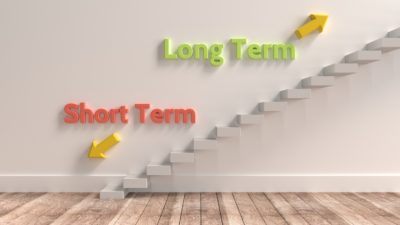According to the government’s National Savings and Investments (NS&I) savings bank, we’re all squirrelling away a bit more money each month.
In fact, our national ‘savings rate’ — the proportion of our income that we collectively save, rather than invest — has now reached a 10-year high, touching 8.5%.
That’s equivalent to an average of £113.77 each month, and a decent increase on the 6.5% savings rate in the dark days of the recession of 2008/9.
And, of course, this shouldn’t really be a surprise. Because last week, we also heard that living standards are finally just about back to their pre-recession peak — at least, for those of us who are over 30.
So as we’re all a bit better off, we’re consequently all able to save a little bit more.
But where?
Of more concern is what we’re doing with all that money. Because, as yet another piece of news told us last week, the Bank of England’s base rate has now been at its present historically low level of 0.5% for six years.
That’s six long years, during which the interest rates paid to savers have slumped to levels close to zero. Many ‘instant access’ accounts, for example, pay just 0.1%, meaning that real interest rates — that is, after taking inflation into account — are negative.
So while a higher level of savings is good news in terms of providing us with a slightly larger ‘rainy day’ fund, it’s not going to do much by way of building up a retirement nest egg, or delivering extra income.
Which is a matter of some concern.
Market high
So what about investing it in the stock market? You probably think I’m mad.
Because after all the ‘will it, won’t it?’ hype as London’s main FTSE 100 index flirted with a level of 7,000 over the past few weeks, the news that it had finally reached a 15-year high was, if anything, slightly anti-climactic.
That’s right. After hitting 6,950 on 30 December 1999, it took until 24 February 2015 for it to surpass that level, reaching 6,959 before sagging back slightly to close at 6,949.
So why would you want to invest at a market high? It’s a reasonable question to ask
And the answer? Because in my opinion, quite simply, it isn’t a market high.
Behind the numbers
Let me explain.
In fact, looked at from the perspective of earnings, the market is roughly half the price that it was back in 1999.
Then, it was trading on a price-to-earnings ratio (P/E) of about 30 — and now, it’s trading on a P/E of just 16.
Put another way, that means every pound that you invest in the stock market will generate roughly twice the amount of dividends than it would have done back in 1999.
And there are certainly some tasty dividend yields on offer — even with the market at its present levels.
Taking a quick look at my own portfolio, for instance, I see that GlaxoSmithKline, for instance is offering investors a forecast yield of 5.2%. Mining giant BHP Billiton 5.3%. Electricity firm SSE 6.1%. HSBC 6.0%. And Royal Dutch Shell 5.8%.
And compared to the miserly interest rates offered by bank savings accounts, I know which I prefer.
Decent dividends
So what to take away from all this? There are two lessons, I think.
The first is the simplest. Ignore the media’s obsession with the FTSE’s absolute level, and look at its valuation — its P/E ratio, in other words.
That’s what we do with individual companies’ share prices, and the index — being simply a basket of individual companies — shouldn’t be treated any differently.
And second, even with the stock market at today’s levels, there are plenty of decent companies out there paying what I consider to be reasonable dividends.
So as we collectively save more of our income, there’s no need to settle for the derisory rates of interest on offer. Invest in shares, instead, and you might potentially benefit from both long-term capital growth and a decent level of dividend income.
And you certainly won’t get that at a high-street bank.






